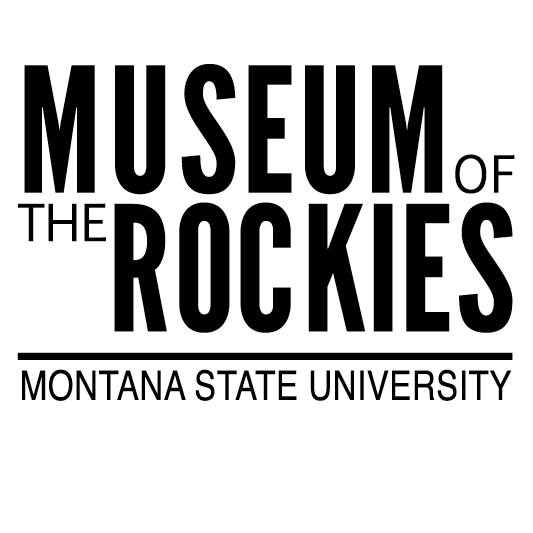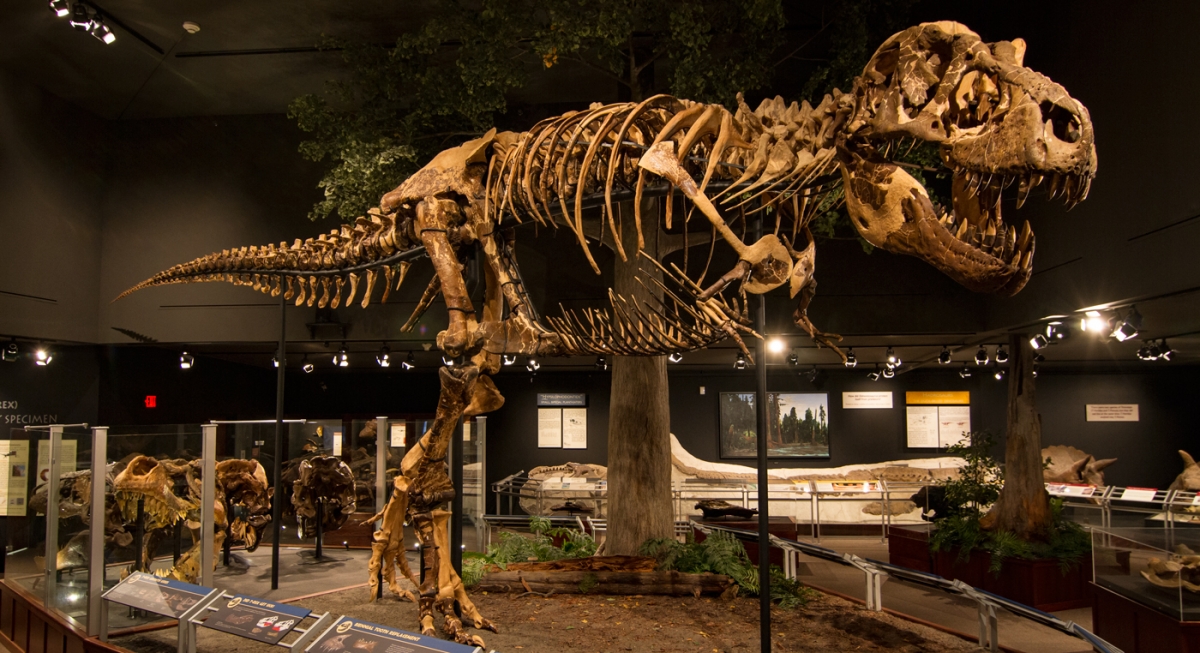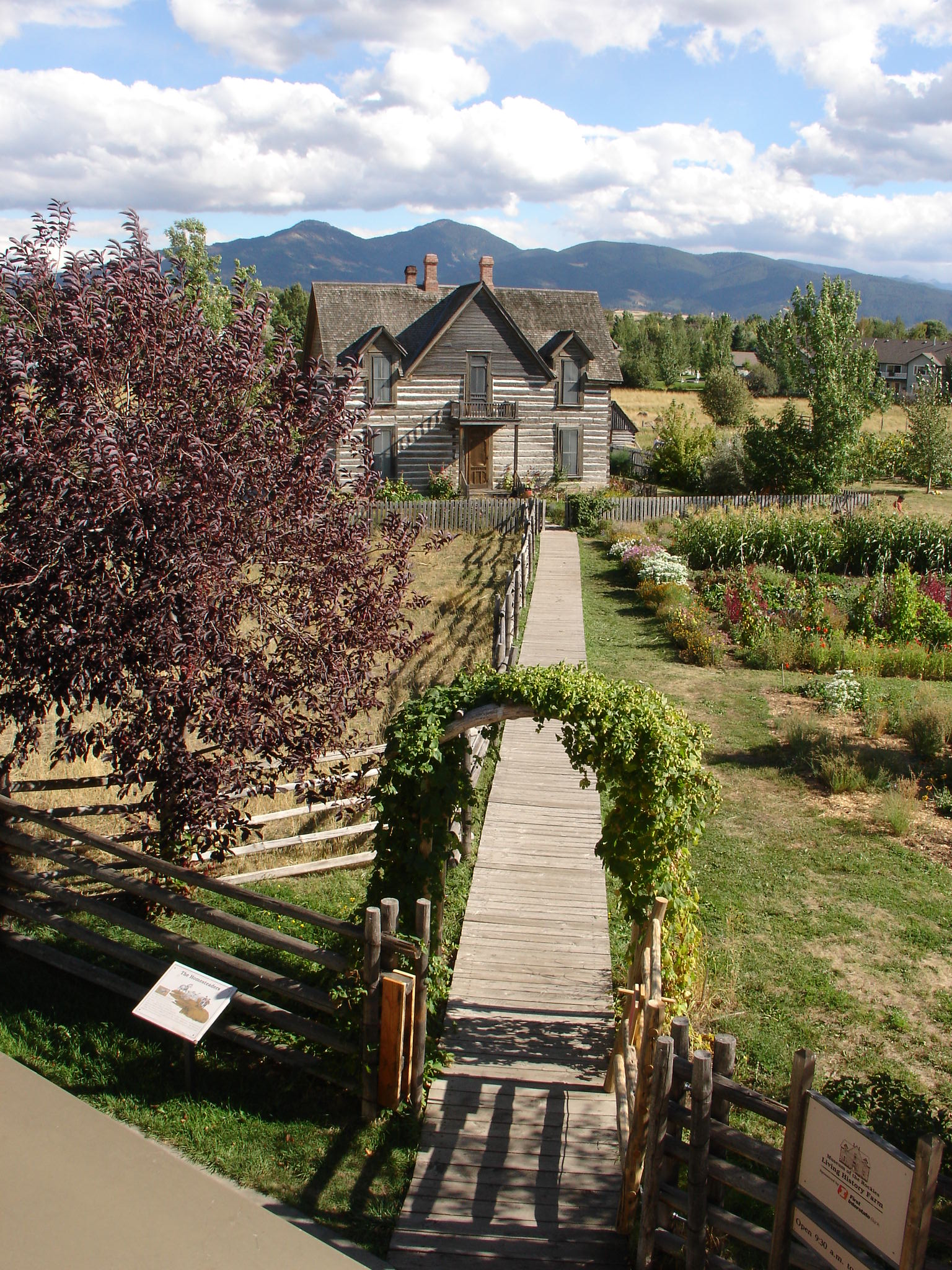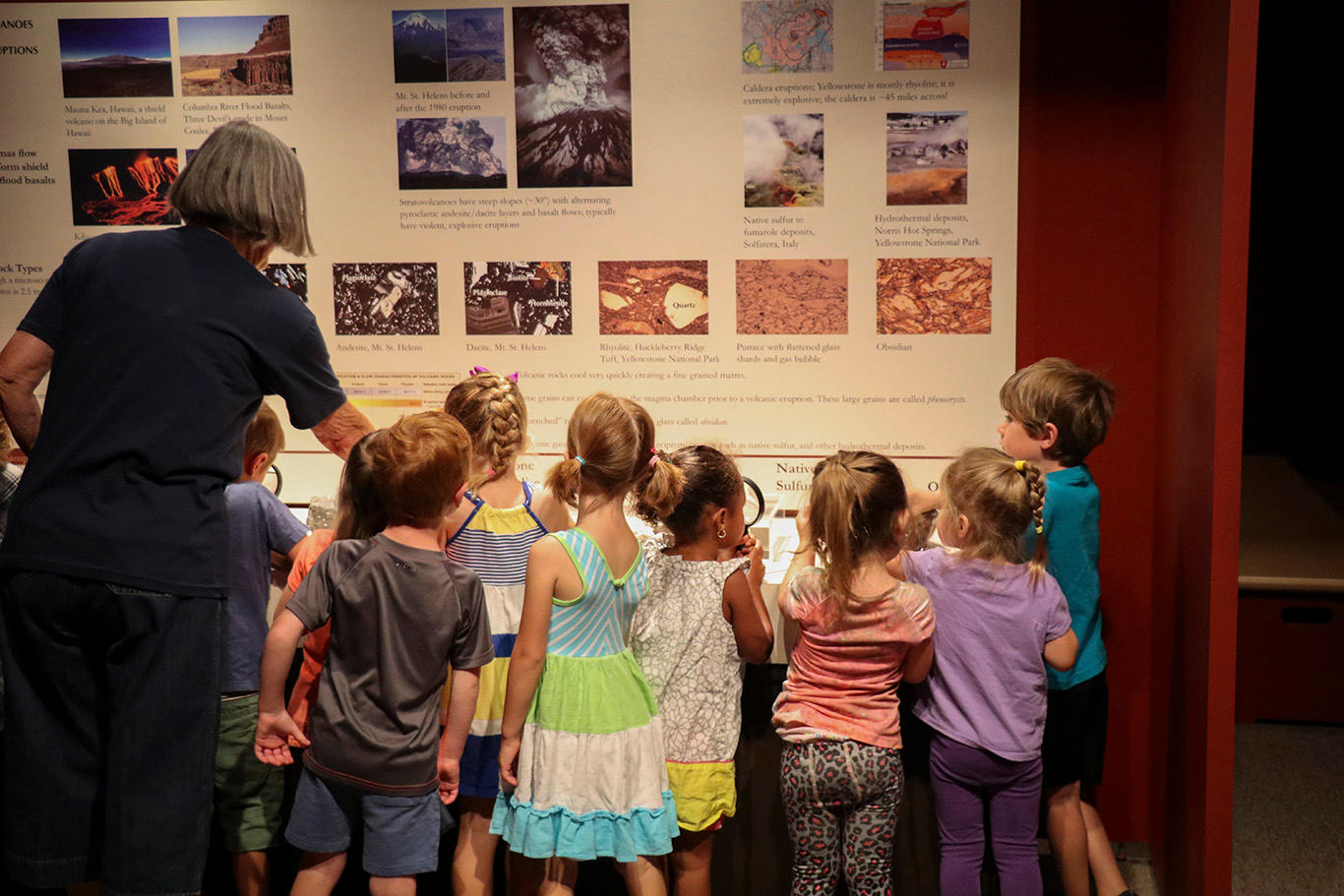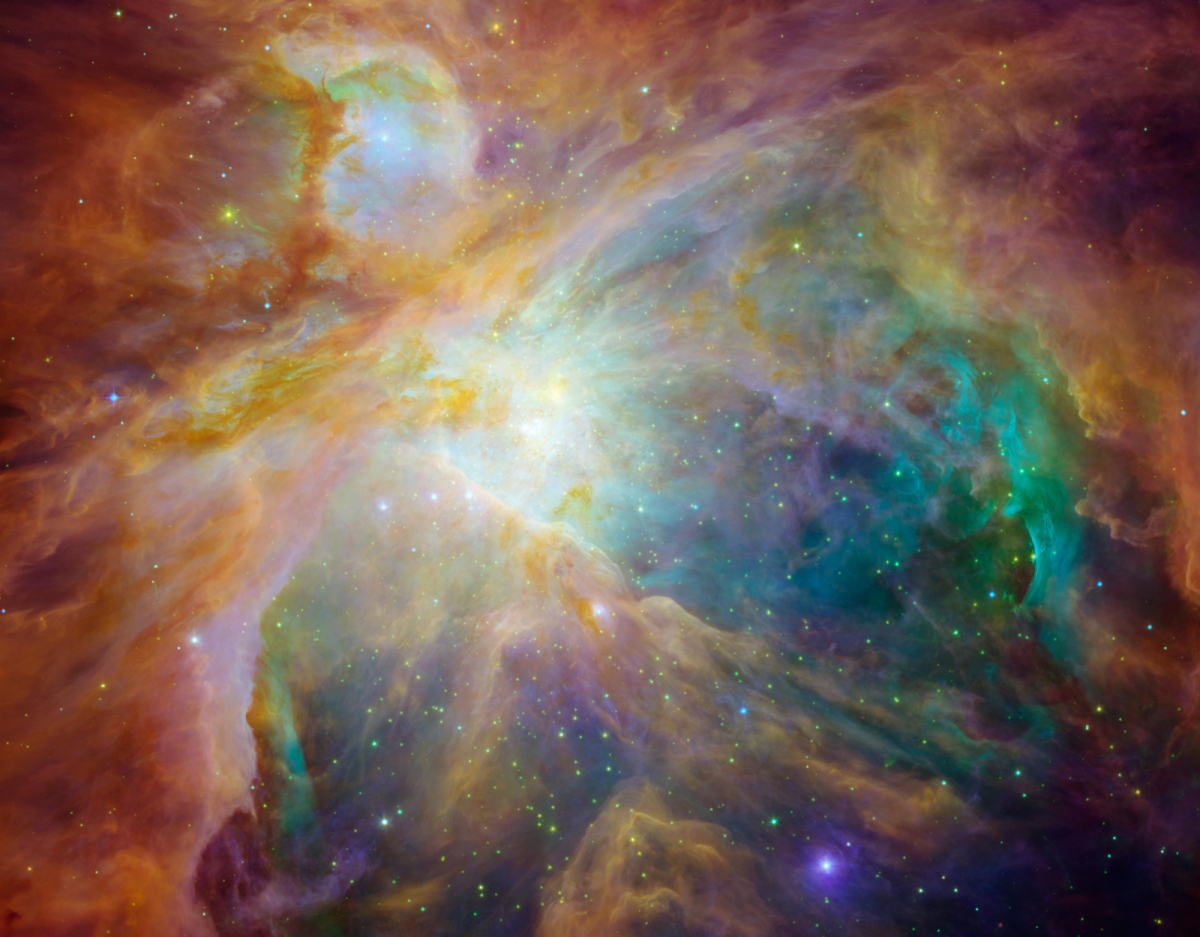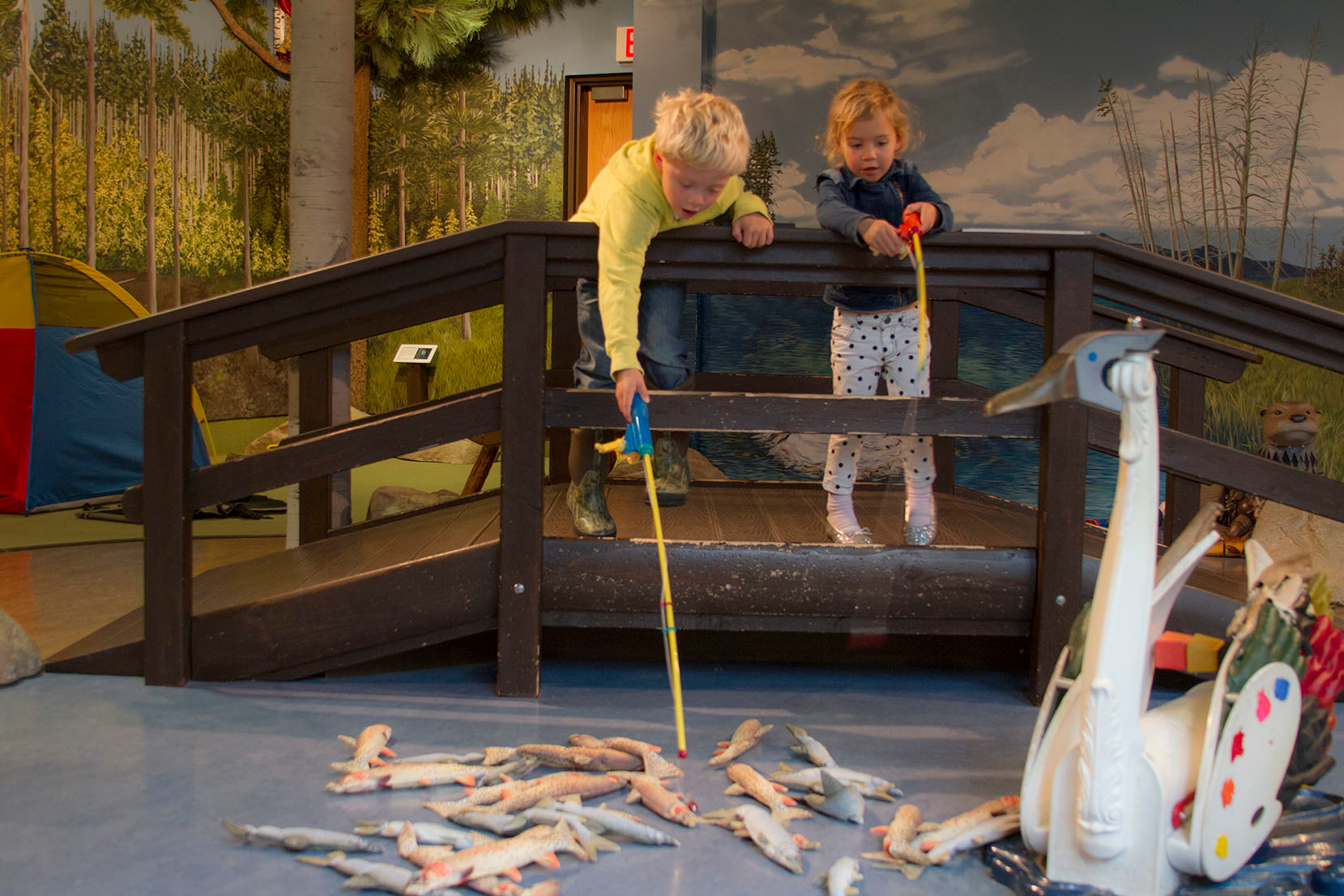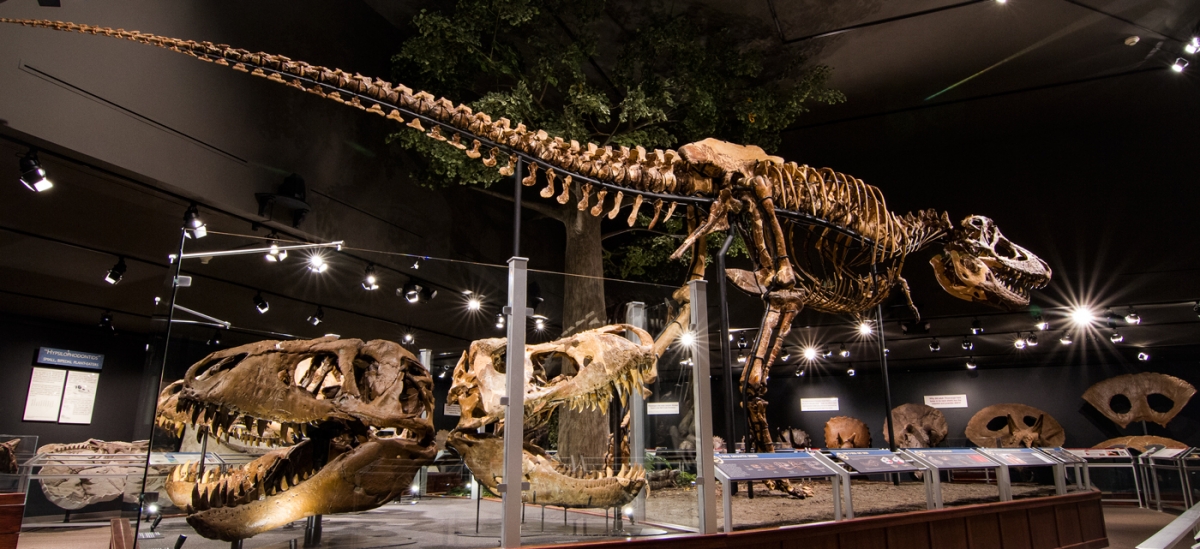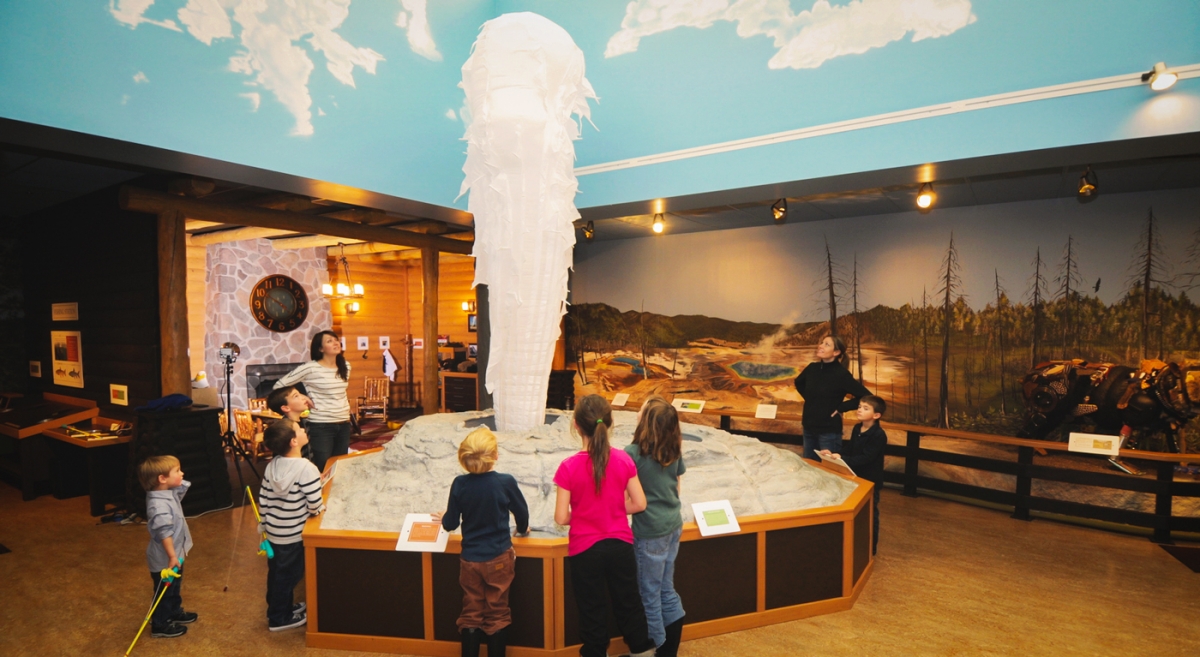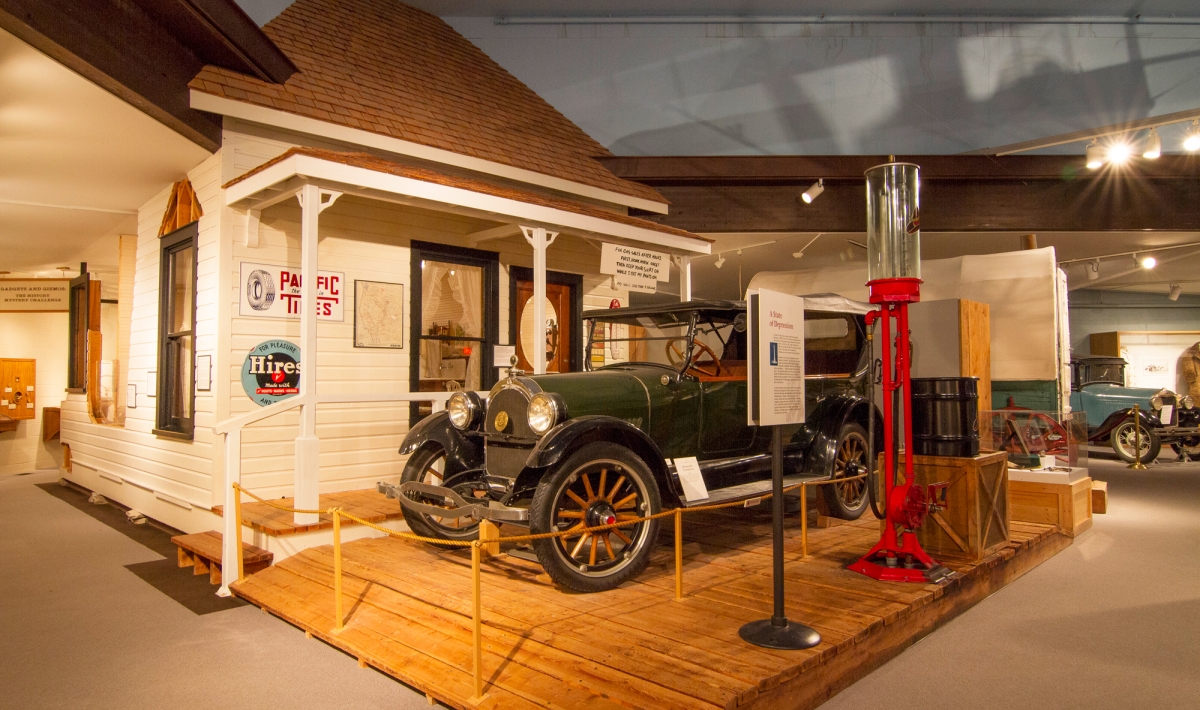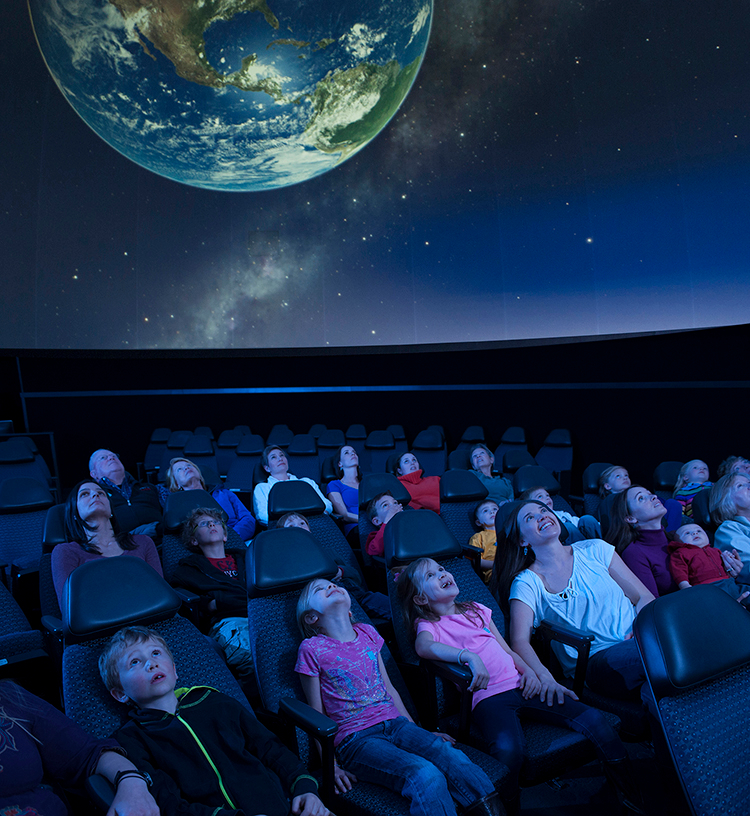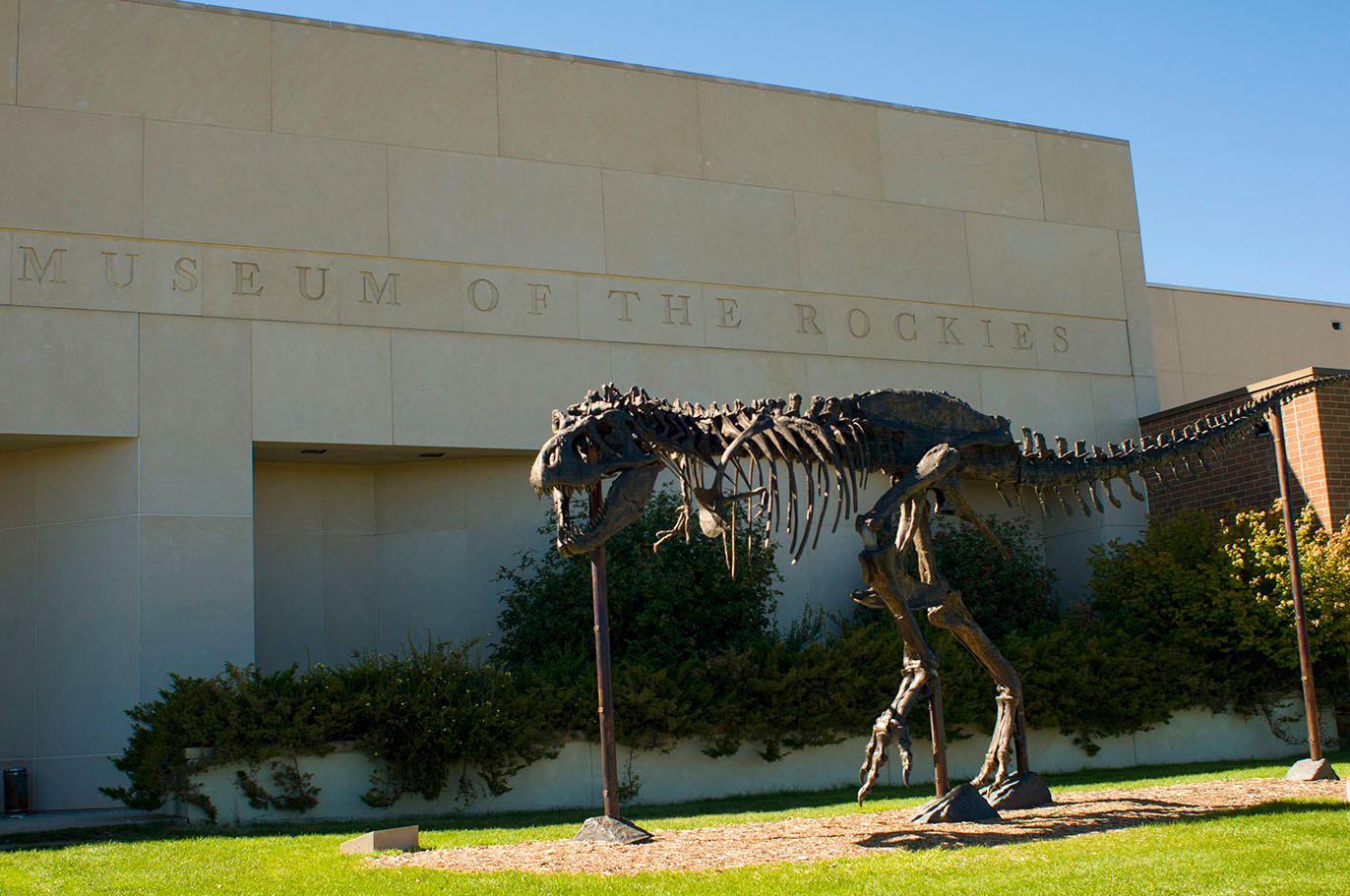Happy #FossilFriday! Not all dinosaurs were large; Orodromeus makelai was a small herbivorous (plant-eating) dinosaur that only grew to about 7 feet long and weighed less than 50 pounds. This is MOR 1141, a partial skull of Orodromeus collected from the Late Cretaceous (~ 76-million-year-old) Two Medicine Formation of northwestern Montana. This dinosaur may have lived in burrows like its close relative Oryctodromeus.
#fossil #dinosaur #paleontology #orodromeus #mor1141 #cretaceous #prehistoric #morpaleo
ORIES BEHIND THE OBJECTS | GOLD NUGGET NECKLACE
Take a close-up look at a Museum of the Rockies artifact in 5 minutes or less! Brought to you by Lisa Verwys, Collections Manager and Registrar for Cultural History, this series explores the stories behind objects from the museum’s history collections.
Explore the story of migration, mining, and love through a gold necklace made of 24 karat nuggets found by Dick Landis in Keystone Mine outside of Norris, Montana.
Museum of the Rockies updated their business hours.
Museum of the Rockies updated their business hours.
NOW OPEN "Thomas D. Mangelsen: A Life in the Wild"! Experience an exhibition containing many of Mangelsen’s most resonant images - images that take viewers on a journey into the haunts of iconic species whose struggles for survival are metaphorical fulcrums for reflection in the 21st century.
This exhibit will be at MOR through December 31, 2020 and is included with admission. Thank you to exhibition presenting sponsor Oakland & Company and supporting sponsors Gallatin Motor Company, LLC, Knife River Corporation, and Montana Arts Council.
Bring on the bison for #FossilFriday! This is the partial skull and horns of the Ice Age bison known as Bison antiquus (USACEFP 243). This extinct species lived in North America during the Pleistocene Ice Age, from approx. 240,000 until 10,000 years ago. Bison antiquus is a direct ancestor of the modern American bison that roam Montana to this day. It was taller and about 25% larger overall than modern bison and would have had larger horns. Come see this fossil on display in the Cenozoic Corridor at MOR. This specimen is on loan from the U.S. Army Corps of Engineers, Fort Peck.
#bisonantiquus #paleontology #Pleistocene #Montana #IceAge #bison #fossil #megafauna #naturalhistorymuseum
STORIES BEHIND THE OBJECTS | BOBCAT FOOTBALL
Take a close-up look at a Museum of the Rockies artifact in 5 minutes or less! Brought to you by Lisa Verwys, Collections Manager and Registrar for Cultural History, this series explores the stories behind objects from the museum’s history collections.
Football has a long history at Montana State University. Explore the early years of the team through photos, student newspaper articles, and a piece of Montana State Bobcats football gear from the museum's collection.
Dear MOR supporters,
Due to inclement weather and casting issues, Museum of the Rockies is postponing tonight’s (Oct. 17) scheduled Chilling Campfire Tours.
On Monday, our team will work on rescheduling your party to a later date (to be determined). We look forward to connecting with you by the end of the day on Monday.
Thank you for your patience and understanding.
All the best,
Angie Weikert
Director of Operations, Education, & Public Programs
Happy #FossilFriday! Did you know Triceratops had a beak? This is the upper beak bone (rostral) of Triceratops (MOR 10854) next to the skull of a distant relative, the hyacinth macaw. In life the beak was covered by a sheath of keratin, just like modern birds. The second photo highlights the rostral bone of another Triceratops (MOR 1604). Macaw beaks can crack nuts with ease, so imagine the bite of a giant horned dinosaur!
#triceratops #macaw #dinosaur #paleontology #montana #MOR10854 #morpaleo
STORIES BEHIND THE OBJECTS | BOZEMAN ROUNDUP
Take a close-up look at a Museum of the Rockies artifact in 5 minutes or less! Brought to you by Lisa Verwys, Collections Manager and Registrar for Cultural History, this series explores the stories behind objects from the museum’s history collections.
Explore the Bozeman Roundup through a series of historical postcards from MOR’s collections. Created to be a hallmark community event, this rodeo was first held on August 12, 1919 at a newly constructed rodeo arena. Learn about one of the famous cowgirls the rodeo attracted in its early days, Fannie Sperry Steele, and how women’s athleticism and grit were rewarded in this popular Bozeman event.
Happy #nationalfossilday ! This year’s National Fossil Day art contest highlights ocean life of the Paleozoic Era (541-252 million years ago). Did you know Montana was once home to a tropical saltwater sea? Fossils from the Bear Gulch Limestone preserve over 100 species of ancient fish and other marine animals that once called Montana home. At MOR, this diorama depicts central Montana ~320 million years ago, when the state was just 12 degrees north of the Equator and underwater.
#montana #fossils #paleontology #beargulchlimestone #paleozoic
In celebration of MOR’s new changing exhibit “Thomas Mangelson: A Life in the Wild”, we’ve decided to share a few wildlife photographs from our collection- although these might be better described as not-so-wild life! Black bears like the ones in these images were known as ‘beggar bears’ or ‘hold-up bears’ in Yellowstone National Park because they would wait by the road for tourists to stop and feed them. Periodically a tourist would get scratched or bitten by a bear and complain to the park superintendent. The superintendent would tell the injured party that they should consider their wounds a “unique souvenir” to take home! The park began discouraging bear feeding in World War II, finally putting a full stop to the practice around 1970.
#blackbear #yellowstonenationalpark #dontfeedthebears #wildlife #history X80.6.2629, X80.6.1882, X80.6.128, photographer Chris Schlechten, Schlechten Collection.
Happy #FossilFriday! This is the premaxilla (part of the snout) of a large horned dinosaur that was discovered near the bottom of the Hell Creek Formation in Montana. This premaxilla (MOR 1122 7-22-00-1) appears to be transitional between Triceratops discovered higher in the Hell Creek Formation and the earlier horned dinosaur Eotriceratops from Alberta.
The inset image shows the position of a premaxilla in Triceratops (MOR 1604). Dr. Scannella's scientific paper describing this specimen was published this week in the journal Vertebrate Anatomy Morphology Palaeontology.
https://journals.library.ualberta.ca/vamp/index.php/VAMP/article/view/29366/21423
Congratulations, John!!
#dinosaur #fossil #paleontology #Triceratops #Eotriceratops #mor1122722001 #evolution #morpaleo
"Snow at Kiyomizu Hall in Ueno" by Kawase Hasui; July 1929; Woodblock print; ink and color on paper; Published by Kawaguchi Jirō; Carved by Maeda Kentarō; Printed by Komatsu Wasankichi; Gift of Paul Schweitzer P.77.28.10
See this and many other woodblock prints through December 31 in "Seven Masters: Twentieth-century Japanese Woodblock Prints."
Thank you to exhibition presenting sponsor Oakland & Company.
https://www.museumoftherockies.org/exhibit/seven-masters-20th-century-japanese-woodblock-prints
November is Native American Heritage Month! Museum of the Rockies honors the Indigenous nations on whose homelands the museum is located. Indigenous peoples have historical and cultural relationships with the land that continue to this day.
The history collection at MOR represents both the contemporary and deep history of 17 tribes, including the Apsáalooke (Crow), Niimiipuu (Nez Perce), Očhéthi Šakówiŋ (Lakota), Piikani (Blackfeet), Seliš (Salish), Shoshone, and Tsétsêhéstâhese (Northern Cheyenne).
These points and bison bones are from the Antonsen bison kill site (24GA660). They are some of the 175,000 archaeological artifacts in the museum’s collection that help illustrate the deep history of Indigenous peoples in Montana. The Antonsen site was periodically occupied and used as a bison kill site for over 2,700 years.
#NativeAmericanHeritageMonth
https://nativeamericanheritagemonth.gov
Catch of the Day
Brooks Falls, Alaska | 1988
The alluring picture before you is counted among the most famous wildlife photographs in the history of the camera. Often referenced as an example of narrative nature photography at its finest, it is indeed an iconic image.
It is Thomas D. Mangelsen’s most instantly recognizable and prized fine art photograph. With this jaw-dropping “predicament scene” in which the viewer is invited to imagine the outcome, Mangelsen captures the exact moment that a spawning sockeye salmon, leaping over the rapids at Brooks Falls, flies dramatically right into the awaiting opened jaws of a massive Alaskan brown bear.
Besides the visual impact, Catch of the Day is a testament to Mangelsen’s ability to previsualize a composition first in his mind’s eye, then positioning himself above the falls of Brooks River, allowing all of the critical elements to converge and pure magic to happen.
Over the years, since the unprecedented image was captured without digital manipulation, countless other nature photographers have attempted to emulate this Mangelsen classic.
“After a week I still wasn’t sure I had gotten the image I wanted of the catch. I had seen it several times, which was special enough, but it all happened so fast and there were so many variables, that I couldn’t be sure if I had reacted quickly enough to capture it on film. I wouldn’t know for certain until I saw the processed film weeks later.”
A special Thank You to the "Thomas D. Mangelsen: A Life in the Wild" exhibition Supporting Sponsors Gallatin Motor Company, LLC, Knife River Corporation, and Montana Arts Council.
https://www.museumoftherockies.org/exhibitions/current-exhibitions/thomas-d-mangelsen-a-life-in-the-wild/
MON, NOV 9
Virtual Homeschool Monday: Fascinating Fossils
Happy #FossilFriday! Tyrannosaurus rex could easily bite through the bones of other dinosaurs, including other T. rex. The first photo shows a metatarsal (one of the foot bones) from a large T. rex (MOR 1602) with a bitemark made by another T. rex. This specimen, nicknamed "H-Rex", was discovered by author and longtime MOR supporter, Homer Hickam Official Page. The second photo shows a close-up of the bite mark and the third photo shows the position of this bone in the foot. This T. rex was eaten by another T. rex! #dinosaur #fossil #paleontology #mor1602 #trex #morpaleo
Move over dinosaurs! Massive marine monsters have emerged in this new changing exhibit. Dive into an ancient underwater world of 70 million years ago when carnivorous fish and giant sea reptiles swam in a vast, shallow sea spanning North America. Learn more at https://museumoftherockies.org/exhibitions/savage-ancient-seas
Happy #FossilFriday! This 3-centimeter-long bone is the dentary (front of the lower jaw) of an embryonic tyrannosaur (MOR 268) discovered in the Two Medicine Formation (~ 75 million years ago) near Choteau, Montana. Tyrannosaurs are one of the most well-known groups of dinosaurs but very little is known about what these giant carnivores were like when they were very young. A study of this jaw indicates that this tyrannosaur had not yet hatched from its egg. This is the first-known embryonic tyrannosaur jaw in the world! Photo provided by Gregory Funston, who led the study published this week in the Canadian Journal of Earth Sciences; other authors include Mark Powers, S. Amber Whitebone, Stephen Brusatte, Jack Horner, Phil Currie, and MOR Curator of Paleontology John Scannella.
#dinosaur #tyrannosaur #fossil #mor268 #prehistoric #montana
TUE, MAR 23 AT 9:00 AM MDT AND 40 MORE
Savage Ancient Seas
TUE, FEB 23 AT 10:00 AM MST AND 1 MORE
Tours for Tots: Spring Constellations
TUE, FEB 9 AT 10:00 AM MST AND 1 MORE
Tours for Tots: Savage Ancient Seas
TUE, FEB 16 AT 9:00 AM MST AND 3 MORE
Homeschool Days: Savage Ancient Seas
